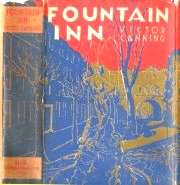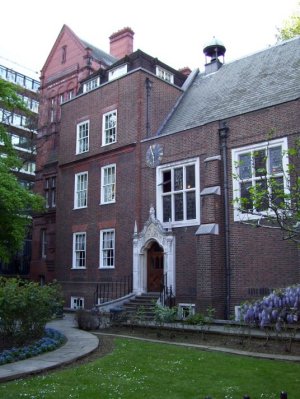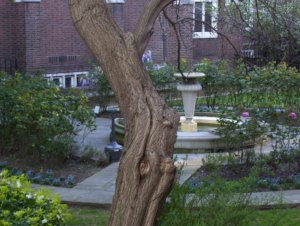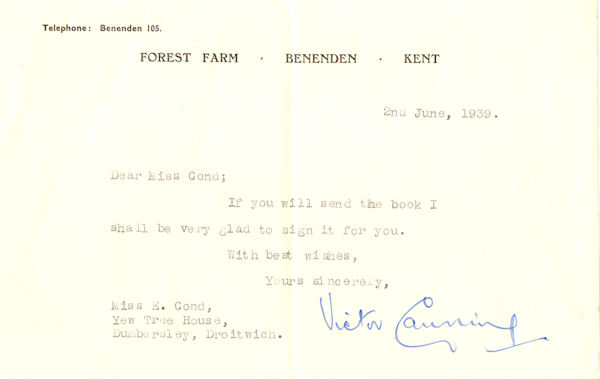
First edition 1939

Heinemann uniform
edition 1974.

New Farrago edition 2020
Audiobook narrated by John Higgins, 2022
 First edition 1939 |
 Heinemann uniform edition 1974. |
 New Farrago edition 2020 Audiobook narrated by John Higgins, 2022 |
The BookFountain Inn, somewhere among the Chancery Inns on High Holborn, houses several enterprises: a group of architects including George Crane; the Society for Progressive Rehabilitation run by the sinister Mr. Tomms; General Factotums run by Ben and Helen Brown; and W. Rage who employs Grace Kirkstall as typist. When the story opens, W. Rage has just disappeared leaving a bankrupt business and Grace without a job. The Browns take her on as a secretary in their own shaky business which is partly a form of Universal Aunts and partly a detective agency. They are asked to investigate their downstairs neighbours, The Society for Progressive Rehabilitation, which has been willed a large inheritance and may have used underhand means to get it. Meanwhile Grace is falling for the architect George Crane who, incidentally, is designing buildings for the same wicked Society. Grace's mother is being wooed by the local butcher, but will not marry him until Grace is married. Will the obstacles in the way of true love be overcome, and the evil conspirators frustrated? Yes, but there is tension and plenty of entertainment to be had on the way. This was Canning's first thriller, though it is gentle and amiable by modern thriller standards. I suspect Ben and Helen Brown owe something to Agatha Christie's Tommy and Tuppence Beresford. They have the same relationship, a blend of bantering and bickering. They have the same inclination to take on a challenge without thinking too much of the consequences or dangers, but in the end to take good care of each other. As is common in early Canning, there is an episode of skinny-dipping. |
Publishing historyThis was published by Hodder and Stoughton in 1939 at 7/6 with a print run of 6400 copies. There was no American edition at the time. It was included in the Heinemann Uniform Edition in 1974, but all hardback editions remain quite rare. Luckily there is now a splendid new edition from Farrago as print, e-book or audiobook. The reviewer in The Times of 20 May 1939 characterises the lack of much violence in the story as a "reluctance to cause pain". Some other reviews were from The Observer of 25 June 1939: and from the Manchester Guardian on 16 May 1939:
|
SettingsFountain Inn itself is based on the real Staple Inn, the last survivor of the Chancery Inns, which is
located in central London just beside Chancery Lane tube station. The designer of the dust jacket draws
something resembling the Staple Inn garden, though giving it a more elaborate fountain. Staple Inn also features in the second Lord Peter Wimsey novel by Dorothy L. Sayers, Clouds of Witness. "Mr. Murbles inhabited a delightful old set of rooms in Staple Inn, with windows looking out upon the formal garden, with its odd little flower-beds and tinkling fountain." (Chapter X) There is no Sheldon Road in Ealing nor Adrian Road in Hampstead nor Fisher Road in Bromley, but the other London locations are real. The village of Hormenden near Maidstone, the location of Harden Hall, is fictitious. The Welsh locations on the mainland, Moylgrove and Ceibwr Bay, exist but the island Cerig Gallant one mile off the coast is fictitious. |
|
 Gate to Staple Inn |
 Garden of Staple Inn |
 The fountain at Staple Inn |
This avid collector of autographed editions was already aware of Canning's writing in 1939. Forty years and many requests later, he responded by dedicating a whole book to her. This rather upset Canning's sister Jean, who complained that Canning had never dedicated a book to his sister, although she had helped him on occasions.
